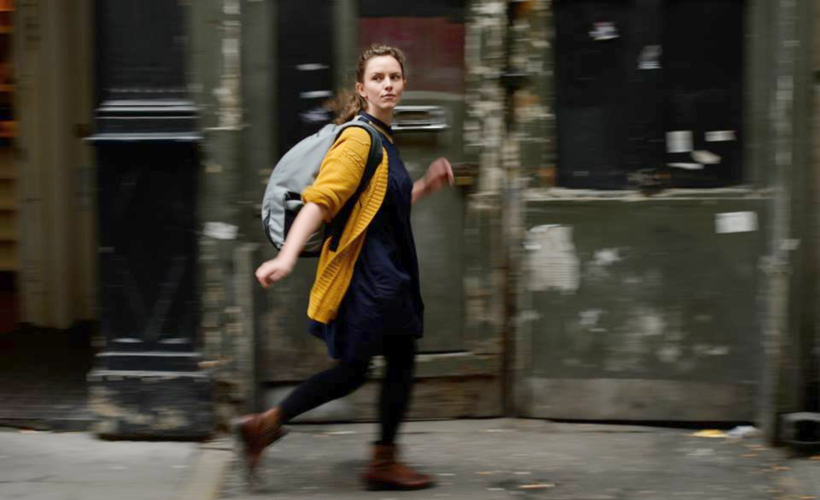
30 November 2019
Saturday
4:15PM
Hello, you!
Right now, I’m staying in this large three-storey hostel that doubles as an art or theatre space in one of the most colourful neighbourhoods of Guayaquil, Ecuador. We’re located by a riverfront, along a cobble-stoned path lined with multi-coloured buildings. It’s definitely impressive on the eyes, but on the ears, it’s a different story. Even as I’m seated on my mattress writing to you, I can hear a woman screaming vulgarities incessantly. I never got the chance to see her wandering about, but I was warned about her as soon as I’d arrived.
She lives on this street and is mentally unstable. Not only does she scream in anger about something or towards someone, but I was also shown videos where she went about banging doors and windows with a metal stick. Apparently, there’s nothing the authorities can do about the situation. Which is greatly unfortunate, especially for the owner of this hostel.
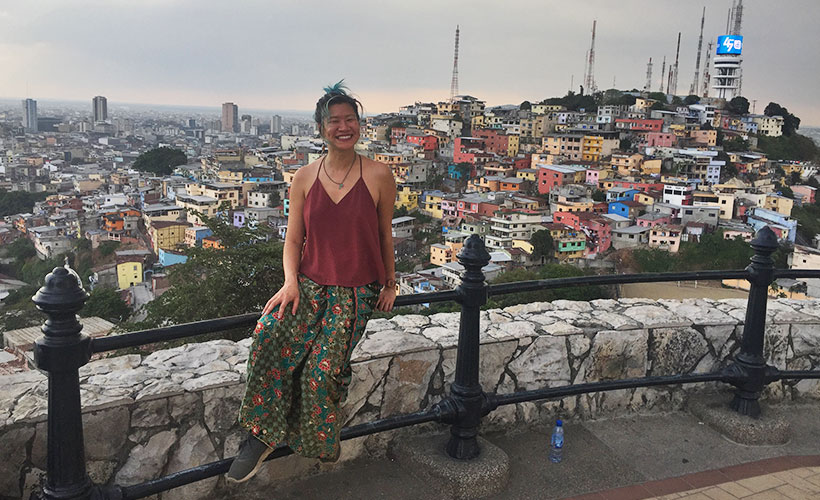
I’m here because of Workaway, so I’m cleaning the place. Officially though, it hasn’t been opened for a year already. Guests weren’t too pleased with hearing screams coming through the walls as they tried to sleep. So the owner had to shut it down until further notice. He can’t even host his theatre plays any more for the same reason.
A day after my arrival, Claire and Jess, two chicas from England, checked-in as well. I sure was grateful to have some company and help with the cleaning. It was a huge space with a lot of nooks and crannies that hadn’t been touched in ages. Also, there’s really not that much to do in Guayaquil. I probably would’ve been a bit bored being here by myself for a week. It’s the most populous city in Ecuador, but travellers usually only come here as a pit stop before flying to the Galapagos Islands or taking a long bus ride.
We did get to see some Galapagos tortoises though. For some reason, about five of these giants were kept in a university car park across our hostel. It was strange, and they didn’t look too happy. Some of the famous attractions in Guayaquil include Iguana Park, the lighthouse, and the Malecón 2000 – the river boardwalk we walked on the daily. After the tortoises, we went for the lizards. I have never seen so many iguanas gathered in one spot before. They’re not caged or anything. Simply left free to roam around the park, and they’re literally everywhere. Claire and Jess bought a bag of cabbage, so we fed them and took some photos. It’s definitely an amusing activity for people with kids. Their little faces get so excited as they hold out a cabbage then scream and run away when an iguana comes close. Then we got sucked into getting pigeon food as well. Something you’d never purchase back home. Pigeons are in abundance everywhere and you’d often want them to stay away so they don’t poop on your head. But feeding them ended up being more fun than I thought it would be.
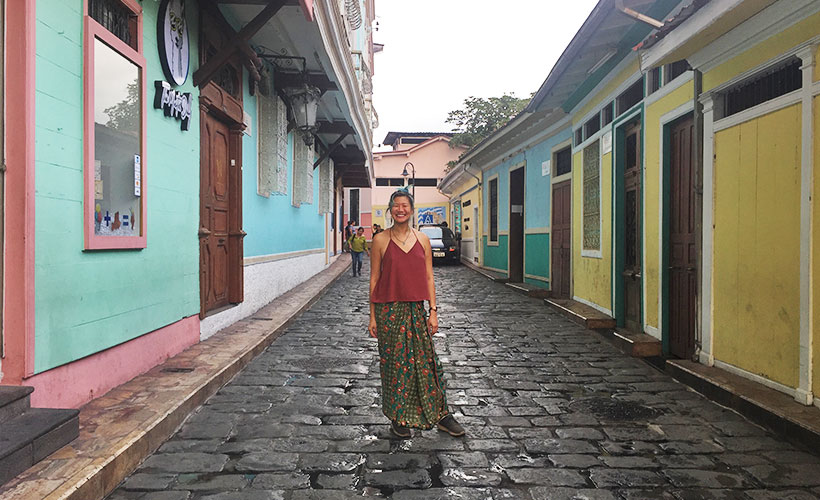
If you’ve read any articles about Guayaquil before, chances are at least one of those would have mentioned being extra careful because robberies tend to happen quite a bit. What I heard from my host was that it used to be really dangerous but it’s alright now. Las Peñas, where we were, was a real ghetto neighbourhood. Then, gentrification happened and the entire city got refurbished. They built the Lighthouse in 2001 to symbolise the New Guayaquil.
To get to the Lighthouse, you have to walk up 444 steps. Along the steps are endless rows of shops, pubs, karaoke bars, and cafes. You can easily stop whenever you want and take a break. We took a slow stroll as the sun was setting as it would’ve been too hot otherwise. At the top, you get a wide, windy, 360o view of the city. And that was it, really. A day of sightseeing done. As you may have guessed, we only went for the free activities.
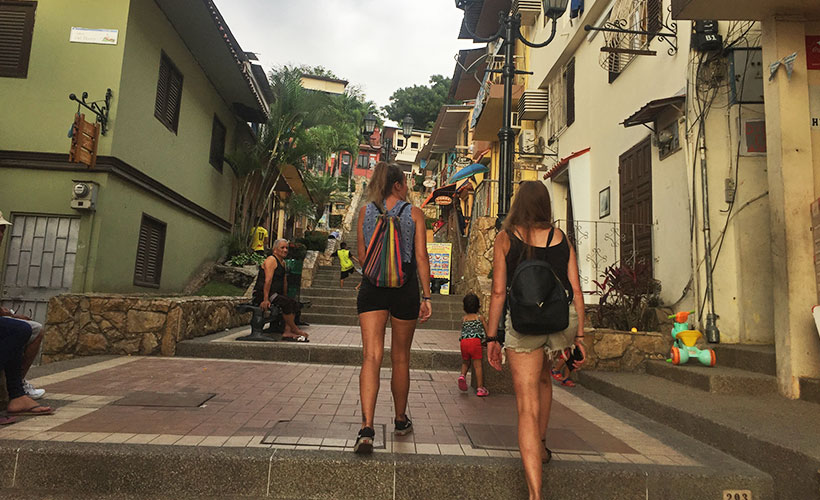
Did you know that Ecuador’s currency is the US Dollar? I didn’t know that until I was stuck at Tumbes (the nearest border town on the Peruvian side) because I missed the final bus towards the border. I wasn’t late; I was either misinformed about the timing or the bus company decided to change its schedule. Happens a lot. Anyway, I met two other guys who were also stranded and so we shared a taxi, which was when I had to apologise profusely for hopping into their cab but having no small change.
From the immigration point, I had to take another taxi to Huaquillas (the nearest border town on the Ecuadorian side), and then to Arenillas (my Workaway location). As I only had a USD100 bill, the taxi guy was so nice to drive around Huaquillas, stopping at shops and money changers, then walking with me to ask if they could break my bill. By the time we found someone who could, it was late dark, and he was tired. His next words, were unexpectedly to my favour. He said he’s done with work now, but lives in Arenillas. So instead of getting another cab, I can just follow him instead. And all he charged me at the end of the day was USD5. It was originally USD2 from the border to Tumbes, then another USD8 from Tumbes to Arenillas. Bless his heart.
I got dropped off at the gates of Happy Fruit, a fruit farm owned by Jorge and Tanya. One of the first things Tanya said to me as I entered the house was, “Are you hungry? Help yourself to anything. The kitchen is yours.” Now, you know how much I love food. Their kitchen was massive. Their fridge was fully stocked. The had shelves full of produce, a basketful of eggs, rows of spices; I couldn’t have been more excited. In the two weeks I was there, I swear I gained a few pounds. The food we had was healthy, sure, but I consumed in abundance. And frequently. One of my favourite sights was their bottomless pile of mangoes as it was mango season. I ate about 10 mangoes every day. Some of the stuff they made at home were bread, chocolate, dried fruits, yoghurt, and chips. It was magnificent.
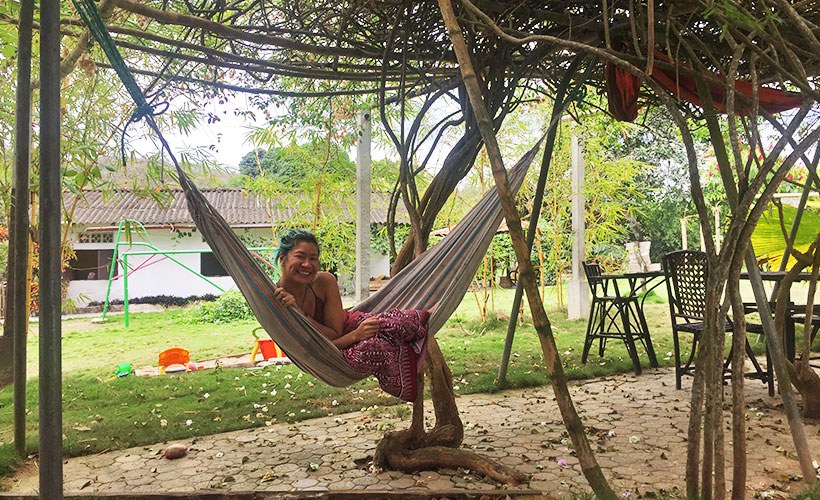
Working on farms typically required hard labour, and not all volunteers enjoy physical work. But it was different here. They had full-time staff who worked and did the hard labour. For the volunteers, Tanya and Jorge would find out your interests and then suggest a task which would suit you best. I’m always at a loss when people ask me what I like to do in my free time because my honest answer would be bumming about, watching shows, and dancing. Not exactly useful hobbies. In the end, Tanya got me to design a bunch of stuff for their social media. Of course, I was using programmes with templates because I’m not a designer. But I thoroughly enjoyed the whole process and Tanya was fully pleased with the end result. To which she said, “I had a feeling you’d be good at this. I saw your (self-painted) nails and knew you were creative.”
The only times I felt stressed out was when their three kids were either crying, screaming, or trying to talk to me. Once, Tanya asked me to watch over her kids for only an hour; I considered for a bit because it’s hard to not be obliging. But my fear took over and I admitted to being terrible with kids. Thankfully, she understood. There was only one time I wandered out to the town, but there’s nothing much to see. Even after I left, when I mentioned Arenillas to other Ecuadorians, some didn’t know where it was. All of my two weeks were spent on the farm itself. Once I got restless, that’s when I moved on to Guayaquil.
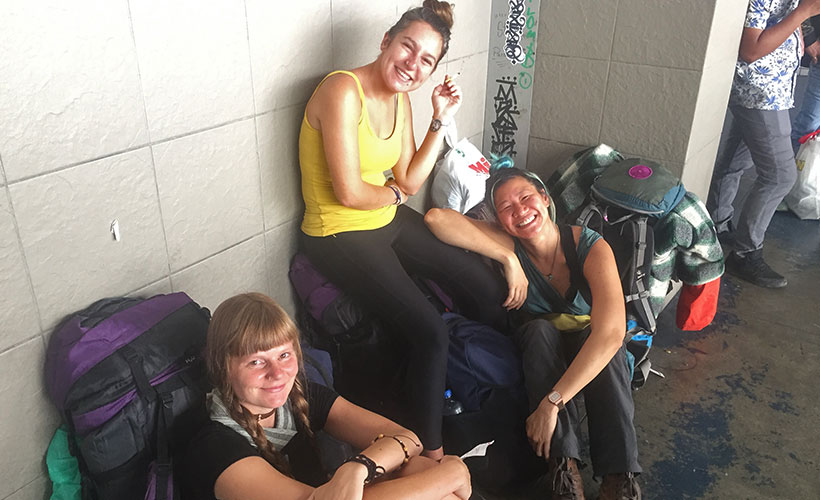
Tomorrow, me and the girls will be heading off to Montañita together, a lovely little beach town with a reputation of being loads of fun. Can’t wait! Hasta luego!
Con cariño,
Petrina
P.S – Things to know before entering Ecuador:
1. Always have small change. With the exception of large chain stores, most shops and restaurants won’t even accept USD20 bills. They’ll either tell you to get change, or you’ll have to wait 10-15 minutes as they scramble about to another shop asking for change. Payments have been quite a hassle.
2. Things are more expensive in Ecuador. If you’re low on toiletries or any other necessity, stock up before crossing the border. Peru and Colombia are definitely much cheaper.
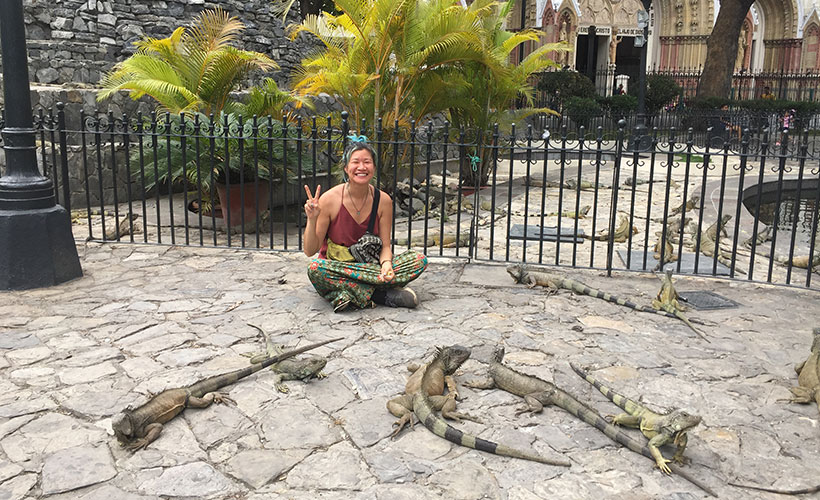
3. I’ve not been to Quito, the capital, yet, but I’ve met at least five travellers who got robbed on different occasions in Quito. All done very sneakily. Mostly took place on buses. Some even while their bags were on their laps. Professional work is done here, guys.
Cover photo: The open-air hallway
*All photos courtesy of the author

